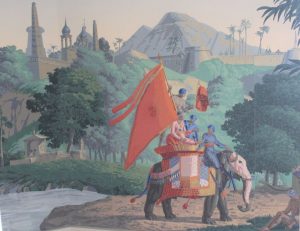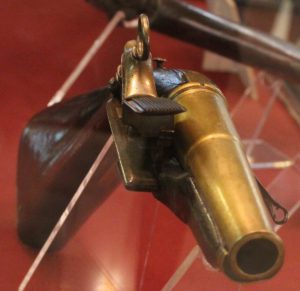 For persons interested in small arms, the 18th century has much to offer. Small arms were common in the army, but also in the everyday life of the rich, be it for sports, hunting or self-defence. Thus, gun-makers produced fascinating pieces for their clients. Find here three unusual small arms with interesting features. Continue reading
For persons interested in small arms, the 18th century has much to offer. Small arms were common in the army, but also in the everyday life of the rich, be it for sports, hunting or self-defence. Thus, gun-makers produced fascinating pieces for their clients. Find here three unusual small arms with interesting features. Continue reading
Results for Tag: Objects of Interest
Objects of Interest: Ladies Robes
 In the years 1750–1775, a fashionable lady would have been dressed in a low-necked gown worn over a petticoat.
In the years 1750–1775, a fashionable lady would have been dressed in a low-necked gown worn over a petticoat.
These gowns were called robes – after the French word for dress, as France was the center of fashion in these days. Continue reading
Object of Interest: Coach Clocks
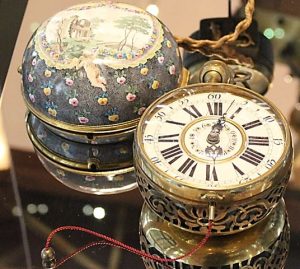 Coach clocks were, in principle, enlarged pocket watches with a diameter of 9 to 12 cm. However, a clock to take with you on a journey by carriage had to provide some special features. First of all, it had to be robust against the bumps of the road. That’s why coach clocks were kept in padded protective cases made of copper or brass, often covered with fine leather. The metalwork of the case was done in delicate broken ornaments to allow the sound of the mechanism to penetrate. Continue reading
Coach clocks were, in principle, enlarged pocket watches with a diameter of 9 to 12 cm. However, a clock to take with you on a journey by carriage had to provide some special features. First of all, it had to be robust against the bumps of the road. That’s why coach clocks were kept in padded protective cases made of copper or brass, often covered with fine leather. The metalwork of the case was done in delicate broken ornaments to allow the sound of the mechanism to penetrate. Continue reading
Object of Interest: The Columbian Printing Press
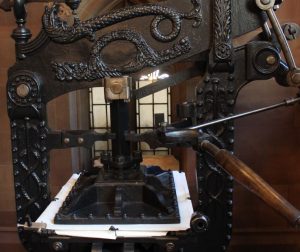 The American engineer George Clymer invented the Columbian printing press in 1813. It was one of the first iron printing presses, and it was in part inspired by the Stanhope press.
The American engineer George Clymer invented the Columbian printing press in 1813. It was one of the first iron printing presses, and it was in part inspired by the Stanhope press.
The Columbian printing press cost $400, more than twice the price of a conventional wooden press – and too much for the American market. So Clymer moved to London in 1817. Here, he made a success of his press-manufacturing business. Continue reading
Panoramic Scene Wallpaper for the Fashionable Home of the Regency Period
In this post:
- The marvel of the panoramic scene wallpaper
- Technical innovations of the early 19th century
- Keeping the craft alive
Wallpaper has been known since at least the 15th century. Starting as a rare luxury item for the elite, wallpaper became more popular in England at the beginning of the 18th century. By then, wallpaper had become a cheap alternative to tapestry or panelling. 1712, the government even imposed a tax on it. Despite the taxation the demand for wallpaper grew in the mid-18th century.
Most wallpapers had been brought to England by the East India Company from China, where Chinese artisans produced hand-painted, dedicated wallpaper for their rich English customers. By the end of the 18th century, producers in France specialized in printed wallpaper became an important competitor on the market. Continue reading
The Origin of Now, Part 4
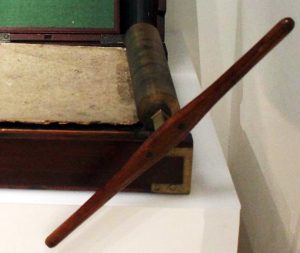 About 250 years ago, science spread into the world and everyday life. People asked how scientific progress and inventions could make life better and easier. They set out to develop and pursue new ideas. Some of these are still around today. In the fourth part of my series, we discover how the invention of a Scottish mechanical engineer changed the office world forever.
About 250 years ago, science spread into the world and everyday life. People asked how scientific progress and inventions could make life better and easier. They set out to develop and pursue new ideas. Some of these are still around today. In the fourth part of my series, we discover how the invention of a Scottish mechanical engineer changed the office world forever.

